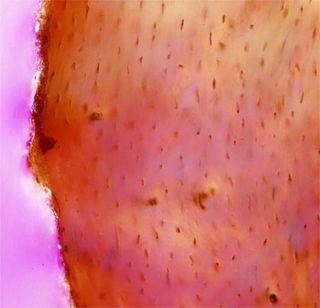'First Bird' Not Very Bird-Like

A feathered beast that lived some 150 million years ago and which is considered the first bird likely grew more like its sluggish ancestors, the dinosaurs.
That's according to new analyses of tiny bone chips taken from Archaeopteryx and detailed this week in the journal PLoS ONE. The study researchers estimate a 970-day period from baby Archaeopteryx to an adult. For comparison, birds reach adult size in a matter of weeks.
They also think the early bird was much larger than previous estimates – probably the size of a raven rather than a crow.
"Dinosaurs had a very different metabolism from today's birds. It would take years for individuals to mature, and we found evidence for this same pattern in Archaeopteryx and its closest relatives," said lead author Gregory Erickson of Florida State University, and a research associate at the American Museum of Natural History (AMNH) in New York. "Living birds mature very quickly and grow really, really fast. This is why we see flocks of pigeons that all look the same and rarely see baby birds."
He added, "Animals like Archaeopteryx would be very foreign to a bird watcher.
Fossils like those from Archaeopteryx and other primitive birds continue to paint a picture of exactly how the transition from theropod dinosaurs to modern birds occurred some 150 million years ago.
Birds and dinosaurs
Sign up for the Live Science daily newsletter now
Get the world’s most fascinating discoveries delivered straight to your inbox.
When alive, Archaeopteryx looked like a cross between a bird and a dinosaur, as it sported feathers, a wishbone (fully fused clavicle) and a reverse first toe on its foot (which allows some birds to perch) like birds. But it also had non-avian dinosaur features like a long bony tail, claws and teeth.
And now slow growth can be added to Archaeopteryx's dinosaur side.
In addition, scientists thought such lickety-split bone growth was a prerequisite for flight. But the now-considered slow grower Archaeopteryx may have flown or at least glided (though the jury is still out on whether it got airborne at all), suggesting fast bone growth wasn't necessary for taking to the air.
Bone chips
The research team removed tiny chips from the thighbones and a shinbone of Archaeopteryx remains. To put the bones into evolutionary context, the team also sampled bones from two early birds – the long-tailed Jeholornis prima and the short-tailed Sapeornis chaochengensi – along with birds' closest dinosaur relatives, including Velociraptor mongoliensis and a miniaturized species such as Mahakala omnogova that is similar in size to Archaeopteryx.
The bones from these early birds looked similar to those of same-sized dinosaurs, as they were dense with small blood vessels and bone cells that were flattened and parallel.
More advanced birds, such as the 94 million-year-old Ichthyornis dispar, had bones that were well-supplied with blood vessels and a woven structure, with randomly oriented bone fibers, indicating fast growth with no annual growth lines.
"Archaeopteryx had comparable metabolism to closely related Velociraptor," said study researcher Mark Norell, a paleontologist at AMNH. "Although the genealogy of birds is well understood, the genesis of modern bird biology has been a huge mystery. We knew that [birds] are a kind of dinosaur, but we now know that the transition into true birds – physiologically and metabolically – happened well after Archaeopteryx."
- A Brief History of Dinosaurs
- Birds of Prey: Spot Today's Dinosaurs
- Avian Ancestors: Dinosaurs That Learned to Fly
Most Popular


